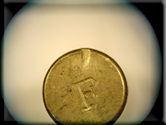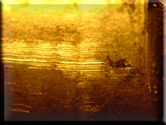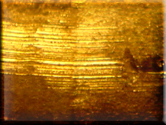  
The images shown above show a difficult microscopic comparison
involving a .22 caliber firearm. The evidence fired cartridge case (first
photo) had insufficient microscopic detail for a match using the firing pin indentation. The match was made,
however, by using the chambering marks (other two photos) on the side of
the cartridge case. Chambering marks such as those only occur as a product
of the firing of the firearm.
|





